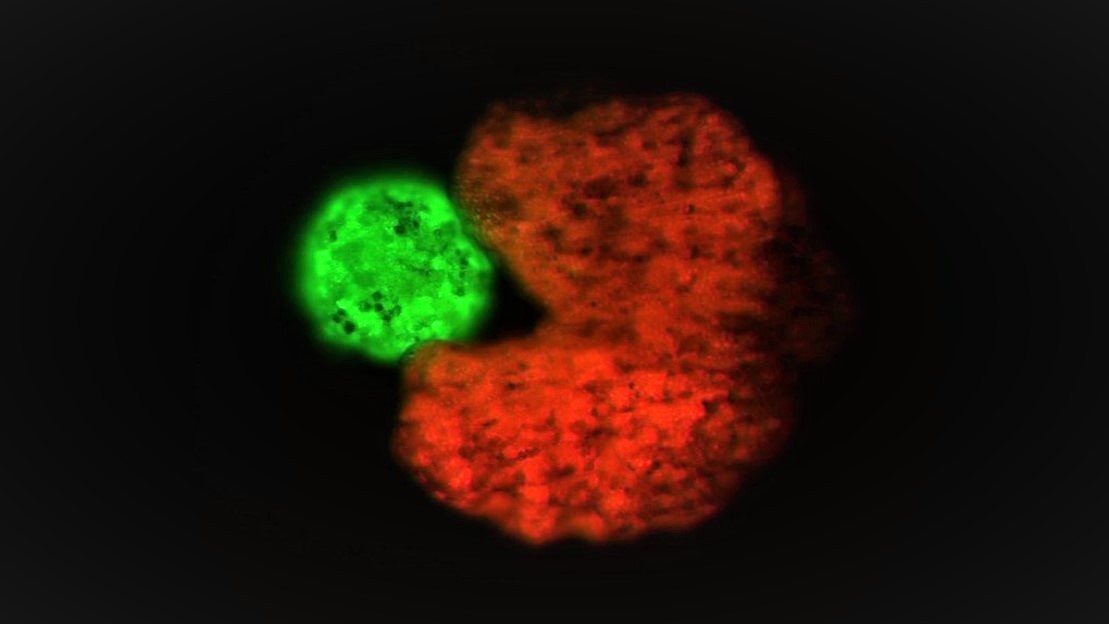Living robots have begun to multiply on their own – and it’s not science fiction, it’s reality. Scientists have created the first artificial life capable of replication.
They are unique robots. The researchers first created them in January 2020 from the heart stem cells of the water frog (Xenopus laevis). They called them xenobots.
“It’s a new human creation – a living yet programmable organism,” one of the xenobot designers, biologist Joshua Bongard, of the University of Vermont, told CNN at the time.
The researchers created xenobots mainly from heart cells, which are able to stretch and contract again. They assumed that due to this property, xenobots would be able to move. And that was also confirmed.
The Xenobots moved until they ran out of embryonic energy, which took about a week to ten days. But when the researchers placed them in a nutritious “soup”, they lasted several months
The researchers experimented with different shapes of xenobots. One had legs, so they taught him to walk. Another was hollow. The researchers programmed it so that he could collect and transfer things. And they also created xenobots with the ability to read and write. the information bit was recorded using a fluorescent protein.
Pac-Man who makes children
In recent months, developers have taught xenobots to replicate. And they were successful. They did it with a xenobot that resembles a Japanese computer game in shape Pac-Man. In it, the player controls Pac-Man – a yellow wheel with a circular section representing the mouth. Pac-Man moves in a maze filled with dots to eat.
Xenobot multiplies by floating in solution and collecting cells. When he collects at least a hundred of them, he assembles his “offspring” from them inside the “mouth”. The finished “child” then simply “spits out”. The new xenobot sets out, searches for the cells himself and makes a copy of them. And so it can go on.
A video of the University of Vermont shows a reproduction of live mini-robots.
“The frog cells that make up a xenobot multiply in a way that is different from how frogs do. None of the known animals, none of the known plants replicate like that, “said Sam Kriegman, a Harvard biologist who led a new study describing xenobotic replication published in the journal. Proceedings of the National Academy od Sciences.
And how did the researchers figure out Pac-Man? They didn’t have it in their head, artificial intelligence suggested it, which they gave the task to come up with the most suitable shape for replication.
“The profile is quite simple, but he probably wouldn’t think of a human bioengineer unless he was a Pac-Man fan,” Kriegman said.
Clever cells without brains
Xenobot may seem like a scene from a horror movie, where crazy scientists are playing for a synthetic future.
But you shouldn’t worry about xenobots. They are programmable clusters of cells without a brain. These mini-robots can be useful to people. The researchers created them with the vision that they will lead them to the technology of organ formation for regenerative exchange. They could also safely deliver medication to the human body or clean blood vessels. And if they did the task, they would simply decompose in the body.
These computer-designed cell files can perform a variety of tasks. They are workers who can walk and swim, last a week to ten days without food and can work together. If he gets sick, he can heal and continue working.
Xenobots can also one day give us an idea of how the evolutionary path actually led to man – how multicellular organisms came into being from unicellular organisms.
–
Resources:
Proceedings of the National Academy of Sciences
– .


